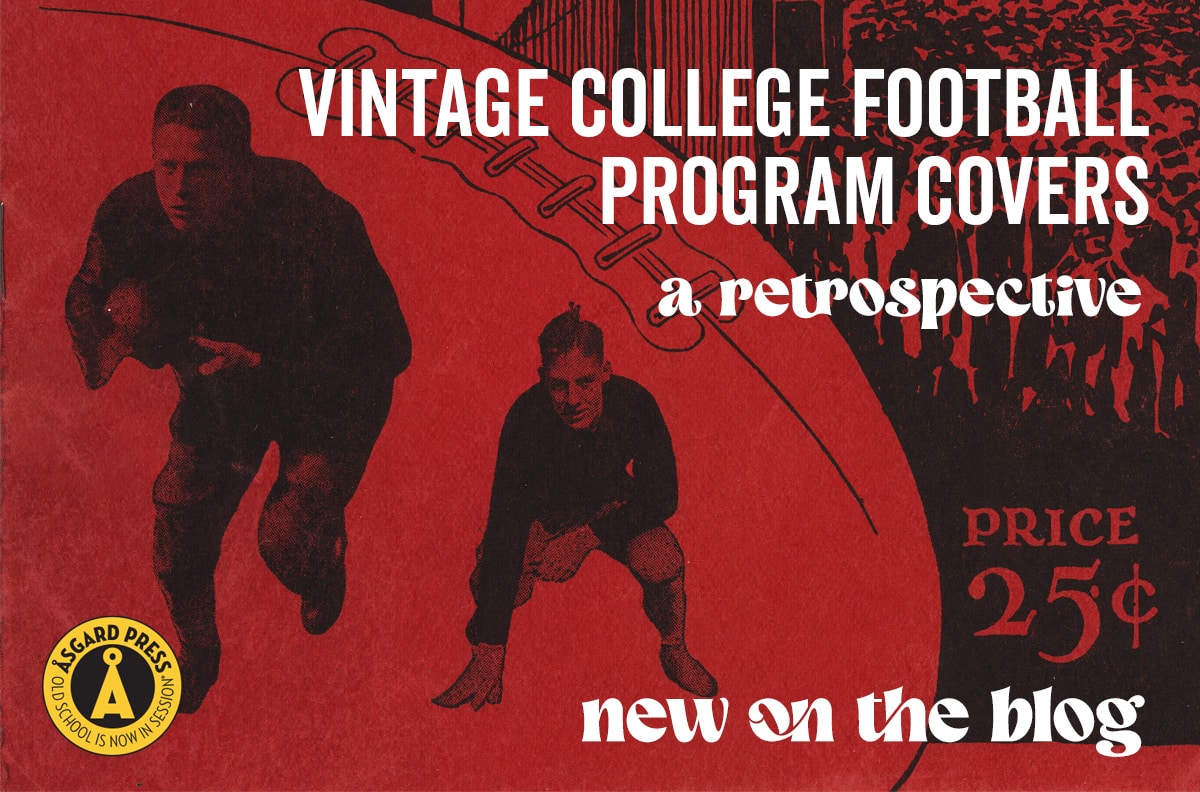Vintage College Football Program Covers Score Big with Nostalgic Enthusiasts
The rich history of college football is adorned with countless memorable moments, iconic players, and fierce rivalries. However, amidst the on-field excitement, there lies another source of charm and nostalgia—vintage college football program covers. These beautifully designed keepsakes not only captured the spirit of the game but also served as mementos for fans attending games. As college football evolved during the 20th century, so did the creative presentation of college football program covers. While today’s covers often feature color photography of teams and stand-out players, the covers from the 1900s-1960s showcased an array of artistic expression, from hand-drawn illustration to stylized photography and block printing. Viewing vintage college football program covers throughout these years reveals distinct trends that present a fascinating history of the game and the covers themselves.
The Early Years: 1900s-1920s
Following rule and safety reforms that standardized and modernized the game in the early 1900s, college football began to gain immense popularity across the United States. The program covers of this era often showcased hand-drawn illustrations featuring team mascots, players, crests, or symbolic motifs, often with limited colors. These covers exuded a sense of whimsy and simplicity, capturing the essence of the times. A notable example is the 1925 Ohio State versus Michigan program cover, which is rendered in flat shapes and colors, with hand-drawn images and text. This cover brightly represents the school spirit and enthusiasm of both teams and captures the seasonal aspect of the game.
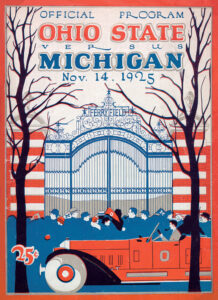
The Golden Age: 1930s-1940s
The 1930s and 1940s marked a significant transition in the design of college football program covers. As art trends evolved, program covers began featuring more intricate illustrations and paintings, often incorporating vivid colors, and capturing dynamic action shots of players. The covers showcased the rise of lithography, resulting in sharper and more vibrant images. One of the most well-known sports artists of this era was Lon Keller (1907-1995) whose paintings for football program covers were highly sought-after, often gracing the covers for multiple teams in a single season through syndication. The 1937 Florida versus LSU cover by Lon Keller exemplifies this new artistic direction with a vibrant painting of an athlete in action surrounded by a dynamic composition.
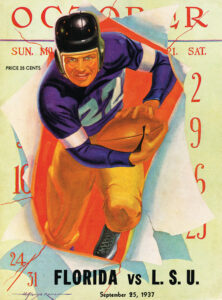
Patriotic Flair: World War II Era
During the World War II era, college football program covers often reflected the prevailing patriotic sentiment. With the war dominating the national consciousness, many covers featured military-themed designs, paying homage to the armed forces. The 1941 Army versus Navy program cover, another created by Lon Keller, typifies this trend, showcasing a vibrant illustration of soldiers in uniform carrying the flags of their military branches. These covers became symbolic representations of unity and resilience during challenging times.
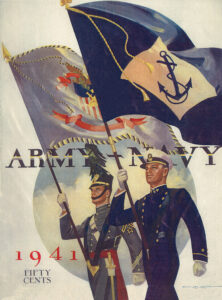
Mid-Century: 1950s-1960s
The 1950s and 1960s witnessed yet another shift in program cover design. While the vibrant, more realistic illustrations from the 1940s remained popular, especially in syndication, many mid-century cover artists began incorporating a cartoon style into their designs. Covers from this period embraced flatter, brighter colors, bold typography, and a stylized depiction of players and fans. The 1953 Michigan State versus Indiana program cover demonstrated this trend with its vibrant color palette, cartoon design, and dynamic typography, reflecting the trends in art and design at the time.
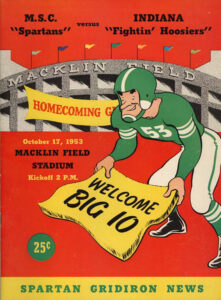
Regional Pride and Rivalries
One of the captivating aspects of vintage college football program covers is the celebration of regional pride and rivalries. Covers often featured iconic landmarks, local scenery, or historical references to the host city or state. For example, the 1926 program cover for the Wisconsin versus Minnesota game depicted the Wisconsin campus’s iconic Camp Randall Stadium the same year it was expanded to include almost 10,000 more fans, establishing a connection between the team and its fervent fanbase.
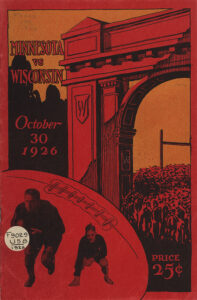
Collecting Vintage Program Covers
Vintage college football program covers have become highly sought-after collectibles. Many avid collectors value these covers for their historical significance, artistic merit, and the nostalgia they evoke. These covers offer a unique glimpse into the past, capturing the essence of a bygone era in college football history.
Today, enthusiasts can acquire vintage program covers through auctions and auction sites such as eBay, online marketplaces, or specialized sports memorabilia stores. While some older programs can fetch thousands of dollars at auction, many vintage programs are priced much lower, making them accessible to even the casual or novice collector. Owning a piece of history allows fans to connect with the roots of their favorite teams and appreciate the evolution of design and cultural aesthetics.
Preserving the Legacy
Preserving vintage college football program covers is crucial for maintaining the cultural heritage of the sport. Institutions, such as libraries, universities, and museums, play a vital role in cataloging and archiving these artifacts. Digitization efforts ensure that these covers are accessible to a wider audience, allowing future generations to appreciate and study the evolution of college football and its visual representations.
Vintage college football program covers are nostalgic windows into the past, capturing the excitement, traditions, and cultural significance of the sport. From the hand-drawn illustrations of the early 1900s to the stylized designs of the mid-20th century, these covers serve as tangible reminders of the rich history of college football. Whether you’re a die-hard fan, an art enthusiast, or a history buff, exploring the world of vintage program covers offers a unique journey through time, celebrating the enduring legacy of college football.

